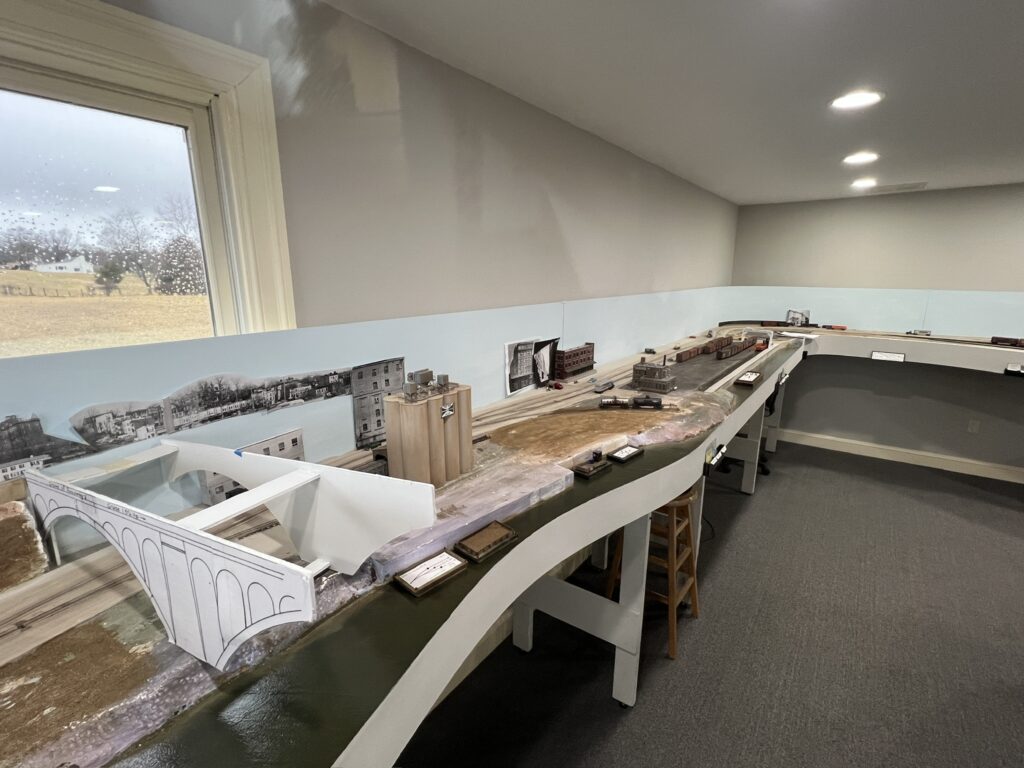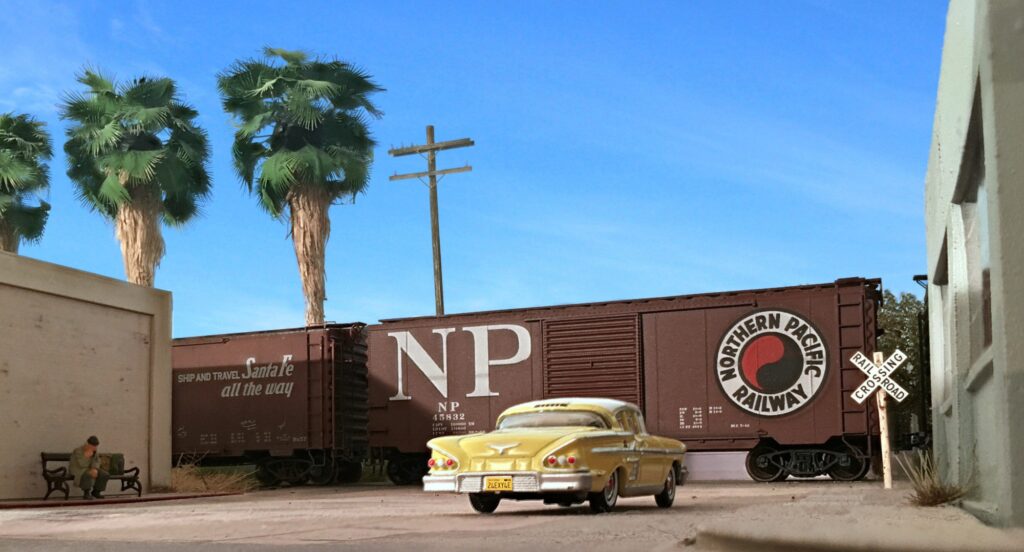
1951 USGS aerial view showing the endpoint of the B&O’s Georgetown Branch. (Washington, DC.) Photo courtesy of Ben Sullivan. Ben goes into much more detail on these aerials on his site HERE.
Last weekend, I attended what was probably the most relaxing and enjoyable operating session I’ve ever experienced. It was graciously hosted by my buddy and neighbor Kelly Regan on his B&O Georgetown Branch layout. The prototype, and the basis of his layout, extended eleven miles, splitting off of the main in the northeast suburbs of DC, arcing through town, and terminating at the Potomac River in Georgetown. Georgetown was home to two small yards and numerous modelgenic industries. Trains on the line consisted of an out-and-back turn as well as a switcher permanently stationed at Georgetown. As themes go, it’s about as compelling as they come.
Thinking back on the session, there were three things that made it so enjoyable. These really made me re-think about how I host guests at my own sessions in the future. Although the layout covers the entire branch, and is capable of hosting several crews, I asked Kelly if I could come up by myself and work only the Georgetown terminus, just the two of us. I wanted to understand his thinking and strategy.
Lesson 1: Have the layout owner be the conductor, the thinker. The guest handles the throttle. One reason typical operating sessions are often stressful, and less than fun, is that visitors are totally disoriented. It’s hard to get up to speed as to where things are geographically on the prototype from just a short orientation session. By having the layout builder calling the shots, it’s much easier to gradually get acclimated and have fun running trains. It’s also much more realistic. On the prototype, a crew knows where everything is because they live in the town and do the same job day in and day out.
Lesson 2: Keep the session length on the short side, ninety minutes or so. While there are “ops ’til you drop” folks, most of us have “had enough” after about an hour and a half. Our session was low stress, low speed running, no pressure, plenty of time for hobby chit-chat.
Lesson 3: Operating on a layout based on a location you’ve physically been to is a totally different experience. This is a hard one to replicate. I live in the DC suburbs and have been to Georgetown hundreds of times. Operating on Kelly’s rendition made it easy to feel like I was there. I struggle with how to pass this on to my guests. When they visit, how do I make them feel like they are in LA or Miami? I don’t think I can. Kelly taped photos of the prototype to the backdrop, which does add a lot to the experience.
The op. session culture in our hobby is often typified by a beat-the-clock, grocery errand-checklist approach that is stressful, confusing, unrealistic, and frankly not that fun. When I operate, I’m looking for an experience, not a pressure-filled, artificial game. I want to feel like I’m at the actual time and place, running trains as they actually were. For me, Kelly’s approach is the way to go.

Here’s Kelly’s track plan. The area in red marks the area we worked during the ninety-minute session.

Facing east from the Key Bridge (the mockup) through Georgetown. The Potomac River is in the foreground. Having photos of the prototype taped to the backdrop really improves the experience. Note the clean room presentation and wide aisles.

Kelly uses a switch list for jobs working Georgetown. He staged the session manually, which gives a more realistic and balanced job flow than what you can get with computer generated lists. The length of the list is misleading in that a lot of these moves involved blocks of cars. Working at a measured, leisurely pace, we got through it in about an hour and a half. A key point is that, as a visitor, I never really saw this list. The layout owner, Kelly, was the conductor, all I had to do as the engineer was perform the moves he asked for. This makes it so much more enjoyable as a guest that’s not that familiar with the theme.

Although the track is gone, much of Georgetown has been preserved and it’s easy to visualize what was once there. In this view we’re looking eastward. The Whitehurst Freeway is to the left, the Potomac to the right. The park occupies what was once the B&O Georgetown trackage. For me, having actually been to the place that’s been modeled elevates the operating experience several notches.






